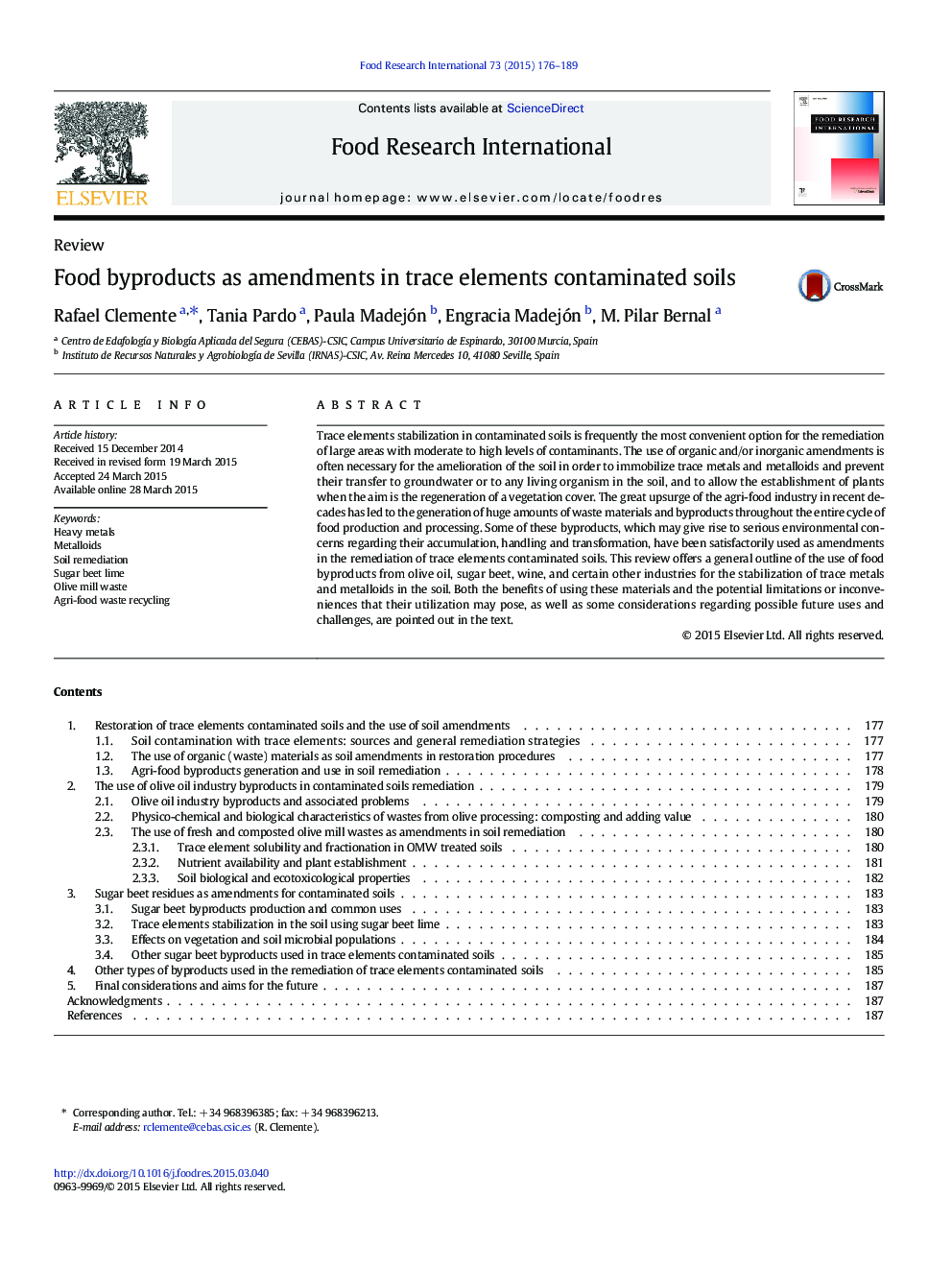| کد مقاله | کد نشریه | سال انتشار | مقاله انگلیسی | نسخه تمام متن |
|---|---|---|---|---|
| 6395465 | 1628473 | 2015 | 14 صفحه PDF | دانلود رایگان |

- Huge amounts of byproducts are generated every year and cause environmental concern.
- Agro-wastes can be used as amendments in trace elements contaminated soils.
- Food byproducts offer a low-cost and sustainable solution for soil remediation.
- Types of byproduct and dose have to be tested to avoid negative effects.
- This would help protect the ecosystem and minimize environmental risks.
Trace elements stabilization in contaminated soils is frequently the most convenient option for the remediation of large areas with moderate to high levels of contaminants. The use of organic and/or inorganic amendments is often necessary for the amelioration of the soil in order to immobilize trace metals and metalloids and prevent their transfer to groundwater or to any living organism in the soil, and to allow the establishment of plants when the aim is the regeneration of a vegetation cover. The great upsurge of the agri-food industry in recent decades has led to the generation of huge amounts of waste materials and byproducts throughout the entire cycle of food production and processing. Some of these byproducts, which may give rise to serious environmental concerns regarding their accumulation, handling and transformation, have been satisfactorily used as amendments in the remediation of trace elements contaminated soils. This review offers a general outline of the use of food byproducts from olive oil, sugar beet, wine, and certain other industries for the stabilization of trace metals and metalloids in the soil. Both the benefits of using these materials and the potential limitations or inconveniences that their utilization may pose, as well as some considerations regarding possible future uses and challenges, are pointed out in the text.
Journal: Food Research International - Volume 73, July 2015, Pages 176-189